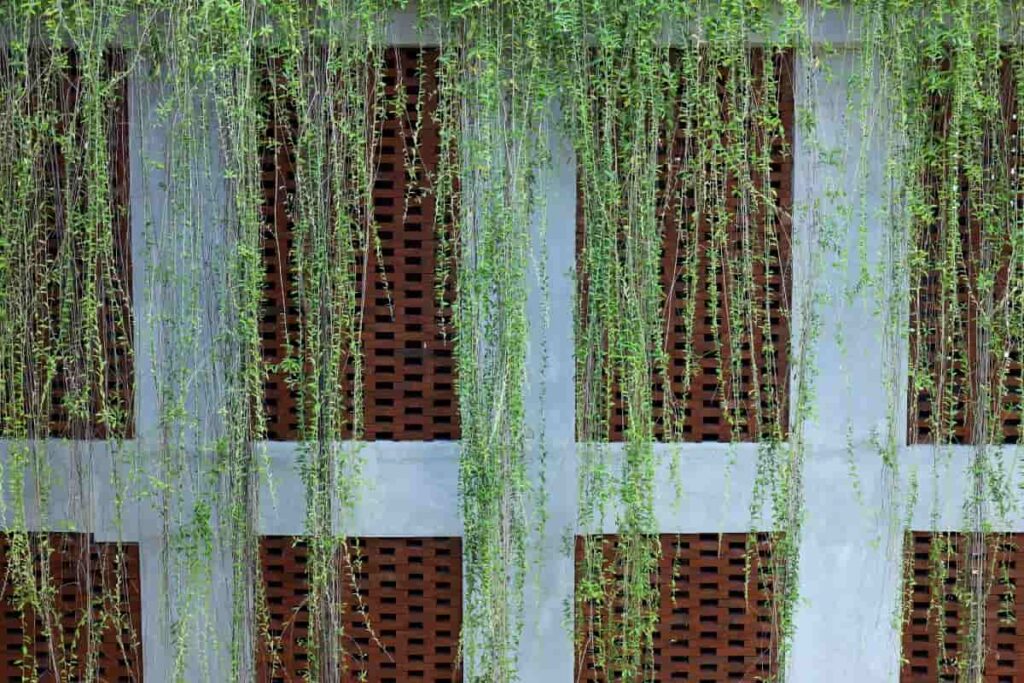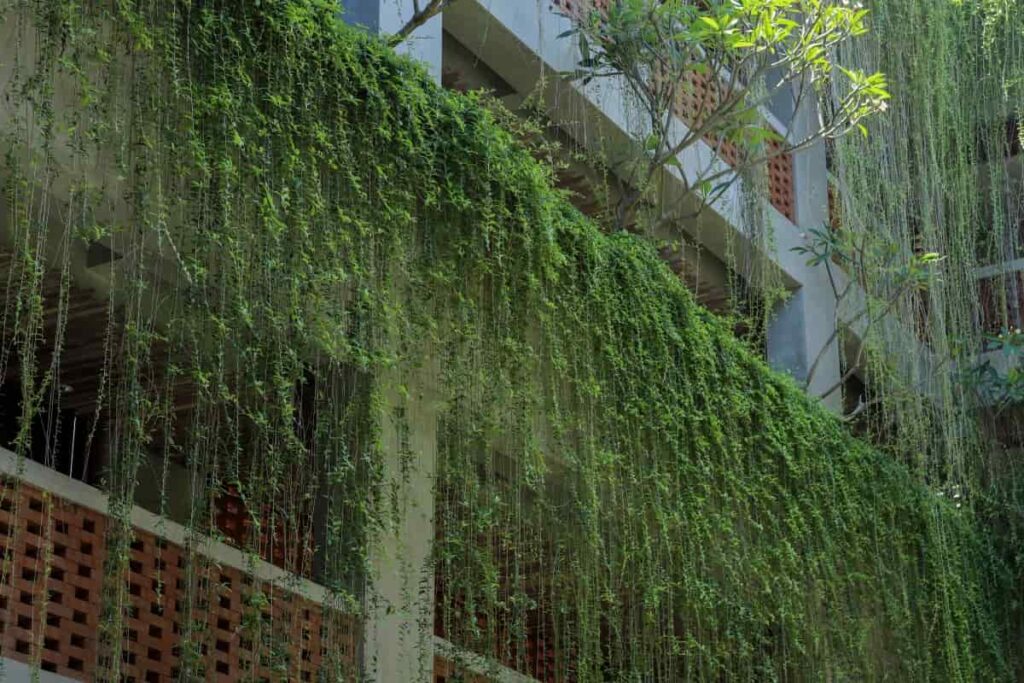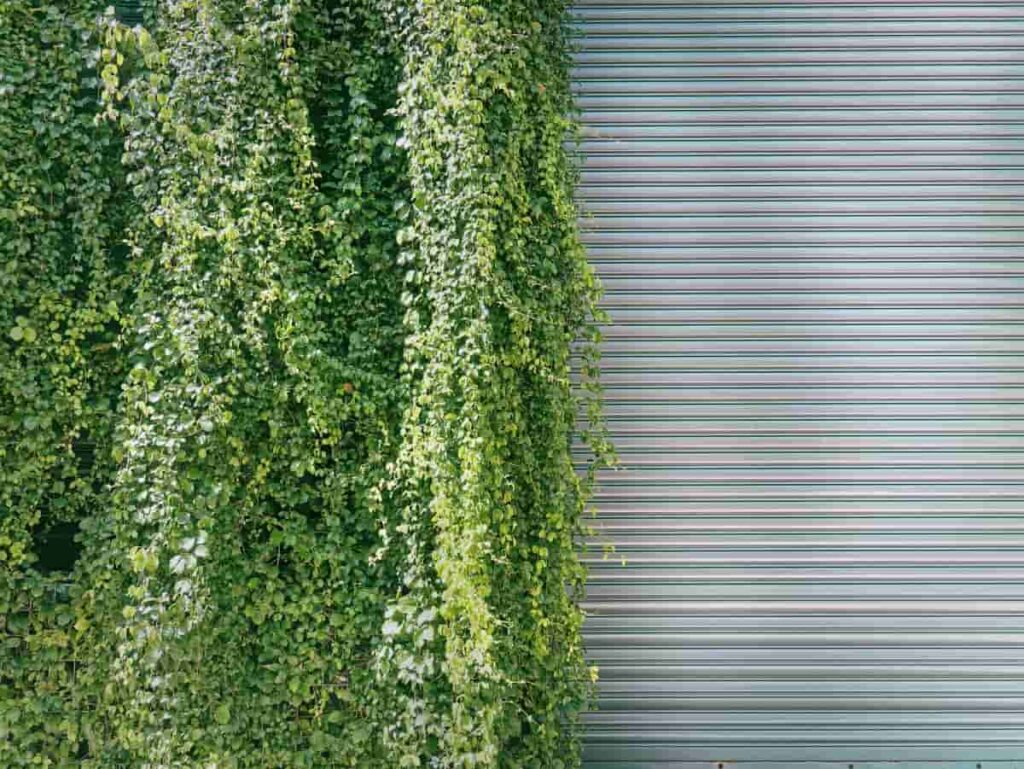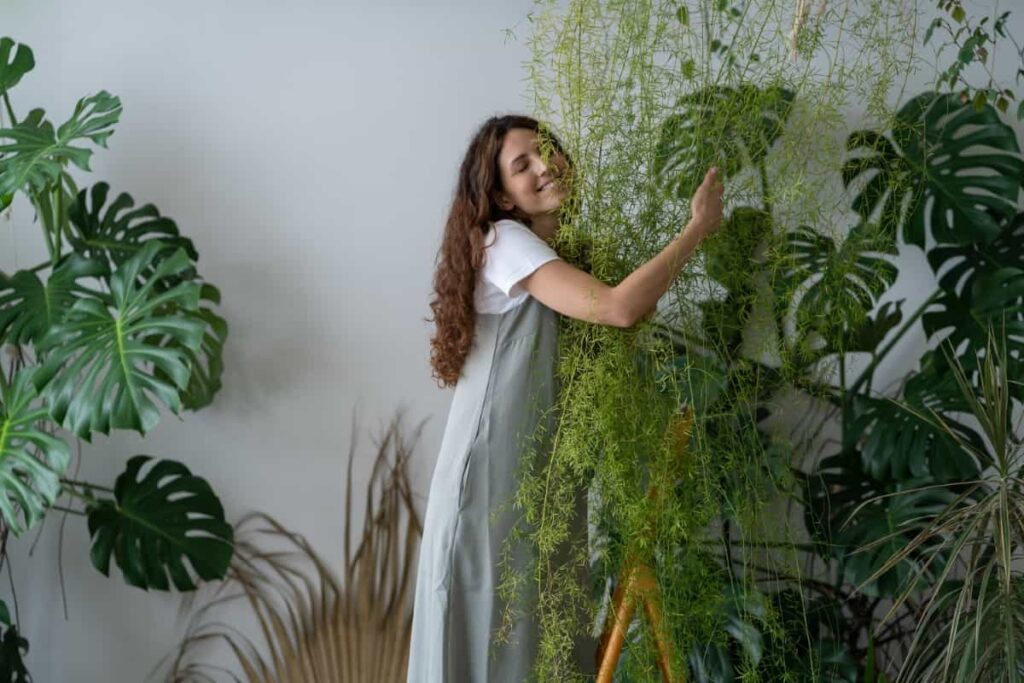Curtain Creeper, also known as Vernonia creeper or parda bel, is a fast-growing vine that can add beauty to any garden. With its lush green leaves and cascading branches, it creates a stunning curtain-like effect when grown against walls, fences, or trellises.

How to Grow Curtain Creeper from Cuttings
Selecting Healthy Cuttings
Selecting healthy cuttings is a crucial step in growing Curtain Creeper from cuttings. To ensure success, it’s important to choose cuttings that are strong and disease-free. Start by selecting stems that are about 6-8 inches long and have at least three sets of leaves. Look for green, vibrant leaves with no signs of discoloration or wilting. Avoid any cuttings with yellowed or damaged leaves, as they may not root properly. Additionally, inspect the stem for any signs of pests or diseases such as mold, rot, or browning.
Preparing the Cuttings
To successfully grow Curtain Creepers from cuttings, it is crucial to start with healthy and well-prepared cuttings. Use sharp pruning shears to make a clean cut just below a node. This will provide an optimal starting point for root development. Remove lower leaves, leaving only a few small ones near the top. This reduces moisture loss through transpiration and allows energy to be directed towards root growth.
Choosing the Right Medium
Choosing the right medium for growing Curtain Creeper cuttings is crucial for their successful propagation. The medium you select should provide adequate support, moisture retention, and nutrient availability to promote healthy root development. One popular option for a suitable medium is a well-draining potting mix including equal parts peat moss, perlite, and vermiculite. This combination provides good drainage while retaining enough moisture to keep the cuttings hydrated.
Planting the Cuttings
Planting the cuttings is an essential step in growing Curtain Creeper from cuttings. Once you have selected healthy cuttings, it’s time to prepare them for planting. Start by trimming off any damaged or wilted leaves using clean and sharp scissors. Now, it’s time to plant the cuttings into these prepared holes. Gently insert each cutting into the hole so that at least one node is covered with soil. Nodes are where new roots will emerge from, so ensuring they meet the soil is crucial for successful rooting.
Providing Adequate Light and Humidity
When it comes to growing Curtain Creepers from cuttings, providing adequate light and humidity is crucial for their healthy growth. If you observe the leaves turning yellow or brown, it may be an indication of too much sun exposure. In addition to light, maintaining proper humidity levels is equally important. Curtain Creepers prefer a humid environment, so misting the foliage occasionally will help create a suitable atmosphere for them to flourish.
Maintaining Proper Temperature
Maintaining the proper temperature is key for the successful growth of Curtain Creeper cuttings. Ensure that your cuttings are kept in a location with consistent temperatures between 21-29°C. Avoid drastic temperature fluctuations, as this can stress the plants and hinder their growth. In colder regions, you may need to provide additional warmth by placing a heating mat under the container or using grow lights that emit heat.
Watering and Fertilizing
Watering and fertilizing are crucial aspects of caring for your Curtain Creeper plant. Proper watering ensures that the plant gets enough moisture without becoming waterlogged, while fertilizing provides the necessary nutrients for healthy growth. Fertilizing is essential for providing Curtain Creepers with the nutrients they need for lush foliage and vigorous growth. Use a balanced fertilizer with nitrogen (N), phosphorus (P), and potassium (K).
In case you missed it: How to Plant Kumquat in Pots: Instructions to Grow from Seed and Cuttings in Containers

Transplanting Established Cuttings
Transplanting established cuttings is an important step in the growth process of Curtain Creepers. Once the cuttings have been rooted and a strong root system developed, they are ready to be transferred to their permanent location. Before transplanting, it is crucial to prepare the soil or potting mix. Ensure that it is well-draining and rich in organic matter.
Gently remove the cuttings from their temporary containers or rooting medium, being careful not to damage the delicate roots. Dig a hole large enough to accommodate the root ball of each cutting. Place each cutting into its respective hole, ensuring that it is firmly packed around the roots. Water thoroughly after transplanting to help settle the soil and eliminate any air pockets.
Hardening Off and Planting Outdoors
Hardening off and planting outdoors are crucial steps in the process of growing Curtain Creepers from cuttings. This step ensures that the young plants are gradually acclimated to outdoor conditions before being permanently planted in the garden or balcony. To begin hardening off, start by exposing the potted cuttings to outdoor conditions for short periods, gradually increasing their exposure over several days. As you continue to expose the plants to outdoor conditions, closely monitor their growth and overall health. Look out for signs of stress or wilting and make adjustments accordingly.
Curtain Creeper Plant Care
- Light: Curtain Creepers love bright, indirect sunlight. Place them near a window where they can get at least 4-6 hours of light daily.
- Fertilizing: Feed your Curtain Creeper with a balanced liquid fertilizer during the growing season. This will help promote healthy foliage and vibrant blooms.
- Pruning: Regular pruning is necessary to control the growth of Curtain Creepers and maintain their shape. Trim back any unruly or overgrown branches to encourage bushier growth.
- Pests and diseases: Keep an eye out for common pests like aphids or mealybugs, which can infest your plants. Treat them with organic pest control methods.
Curtain Creeper Propagation Methods
Curtain Creepers, also known as Vernonia Elaeagnifolia Curtain Creeper or Parda Bel Curtain Creeper, can be propagated through various methods. One common and effective method of Curtain Creeper propagation is using stem cuttings. Select healthy cuttings that are free from any diseases or pests. Choose cuttings that have at least two to three nodes. Next, prepare the cuttings by trimming them to a length of about 6-8 inches. Remove any Curtain Creeper Flowers or buds present on the cutting.
Once the cuttings are prepared, choose the right medium for rooting. A mixture of perlite and peat moss can work well for this purpose. Plant the prepared cuttings into the chosen medium and ensure they are planted deep enough to provide stability. Provide adequate light and humidity for the rooted cuttings. Place them in a location with bright indirect sunlight and mist them regularly to maintain humidity levels. Maintaining proper temperature is crucial for successful propagation. Keep the temperature around 21-29°C during daytime and slightly cooler at night.
How to Grow Curtain Creeper in Water
- Start by selecting healthy cuttings from a mature Curtain Creeper plant.
- Fill a glass or jar with clean water, ensuring that at least half of the cutting is submerged in water.
- Place the jar in a location where it will receive bright indirect sunlight. Avoid direct sunlight, as it causes excessive heat and damages the cutting.
- Change the water every few days to prevent stagnation and ensure oxygen supply to the roots.
- After about 2-3 weeks, you should start seeing root growth from the bottom end of the cutting.
How to Grow Curtain Creeper in Pots
Growing Curtain Creeper in pots is a great option for those who have limited space or want to add some greenery to their indoor areas. First, choose a suitable pot that has good drainage holes. It should be at least 10-12 inches deep and wide enough to accommodate the growing roots. Fill the pot with well-drained potting soil mixed with organic compost. Next, take healthy cuttings of Curtain Creeper from an established plant.
Now, create a small hole in the prepared soil using your finger or a pencil. Insert each cutting into the hole, making sure it is planted firmly but not too deeply. Place your potted Curtain Creeper in a location where it can get indirect sunlight for at least 4-6 hours every day. Water your potted Curtain Creeper regularly but avoid overwatering. Check if the top few inches of soil feels dry before watering again. Make sure water drains out through the bottom holes properly to prevent root rot.
Curtain Creeper Plant Price
Curtain Creeper is a popular choice for adding greenery and beauty to your garden or balcony. The price of Curtain Creeper can vary depending on various factors, such as the size of the plant, its health, and where you purchase it from. Generally, smaller cuttings or young plants may be more affordable compared to larger, more established ones.
In case you missed it: How to Grow Kikuyu Grass from Seed: Guide to Kikuyu Lawn Planting and Care

Where to Buy Curtain Creeper Seeds
1. Local Nurseries: Start by checking out your local nurseries or gardening centers. They often carry a variety of plant seeds, including Curtain Creepers.
2. Online Seed Retailers: The internet has made it easier than ever to find and purchase specific plant seeds, including those of Curtain Creeper seeds. Numerous online seed retailers offer a wide range of options at competitive prices.
Curtain Creeper Benefits
Curtain Creeper is a versatile and beautiful plant that offers numerous benefits. One of the main benefits of growing a Curtain Creeper is its ability to create a natural curtain-like effect. As it grows, it forms a dense covering of leaves and flowers that can be trained along walls, fences, or trellises. This makes it an excellent choice for adding privacy to your outdoor spaces.
In addition to its aesthetic appeal, Curtain Creeper also provides many environmental benefits. It acts as a natural air purifier and releases oxygen into the environment. This helps improve overall air quality and creates a healthier living space.
Growing Curtain Creeper in Balcony
To start growing Curtain Creeper on your balcony, you’ll need to select healthy cuttings from an established plant. Look for stems that are about 6 inches long with plenty of leaves. Once you have your cuttings, prepare them by removing the lower leaves and making a clean diagonal cut at the bottom. Next, choose the right medium for planting your cuttings. Fill small pots with the chosen medium, then plant one cutting per pot. Place the pots in an area that receives bright but indirect sunlight.
In case you missed it: How to Grow Gold Nugget Mandarin: Step-By-Step Guide for Planting and Care

Conclusion
Growing Curtain Creepers from cuttings can be a rewarding and enjoyable experience. With its stunning foliage and cascading growth habit, this plant adds beauty to any space. By following the step-by-step guide and care tips, you can successfully propagate and nurture your very own Curtain Creeper.
Note: The images presented in this post are intended solely for representation purposes. The images are meant to serve as visual aids and should not be relied upon as accurate representations of their real-life counterparts.
- Aquaponic Farming at Home: A Step-By-Step Guide
- Profitable Village Farming Business Ideas in 2024
- High-Yield Aquaculture: Fast-Growing Fish for Farming
- Effective Fish Pond Construction Techniques for Beginners
- Irrigation and Water Management in Pineapple Farming
- Blossom to Harvest: Mastering Flowering and Pollination in Papaya Farming
- Pig Fattening Essentials: From Selection to Sale for Beginners
- Raising Wagyu Cattle: A Complete Guide for Premium Beef Production
- Soil Types and Their Water Holding Capacity
